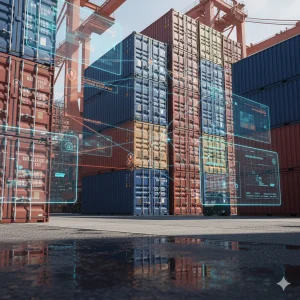Sanctions are no longer the blunt tool or slow-burn concern that some may remember. By 2025, global enforcement will be sharper, political stakes will be higher, and evasion tactics will be evolving at breakneck speed.
Financial institutions and compliance teams face a landscape littered with cross-border risks, where missing just one sign of subterfuge can spark regulatory penalties, media backlash, and irreparable reputational harm.
Too many organizations are discovering too late that yesterday’s controls can’t counteract the sophistication of today’s sanctions evaders.
The topic matters more than ever, not just because sanctions programs are proliferating worldwide, but also because evasion itself now relies on bleeding-edge technology, agile professional facilitators, and a web of shell companies spanning continents.
Why should compliance leaders and risk managers care now?
- Enforcement agencies are collaborating across borders at an unprecedented scale, closing traditional loopholes and spotlighting industries once thought “safe.”
- Technological adoption is a double-edged sword. While AI-driven tools help spot risk, bad actors are using those same tools to evade detection.
- Missing a single risk indicator can spell disaster. Modern evasion doesn’t look like old-school money laundering; it’s complex, fast-moving, and always mutating.
In this article, we’ll dive into how sanctions evasion tactics have shifted in 2025, why classic controls are lagging, and what robust strategies leaders are using to stay a step ahead.
Evolving Tactics
Sanctions evaders thrive amid complexity. With geopolitical realignments and an explosion in digital transaction channels, the playbook for dodging enforcement is expanding.
Key developments in evasion tactics:
Professional Enablers on the Rise
- Attorneys, consultants, and accountants with global reach are increasingly complicit in creating, managing, or shielding front companies.
- Regulatory crackdowns are now targeting these “gatekeepers,” with whole investigations centered on professional services networks.
- Example: In a landmark 2025 case, investigators found that a London-based legal firm structured more than a dozen layered offshore entities on behalf of blacklisted oligarchs.
Third-Country Proxies and Jurisdictional Arbitrage
- Funds, goods, and services now routinely travel through a maze of countries with lax enforcement or no sanctions alignment.
- The use of shell companies in neutral jurisdictions is up 60% compared to pre-pandemic years.
- Recent enforcement actions highlight how sanctioned oil and luxury goods are trafficked through Southeast Asia and the Middle East before reaching their final destination.
Obscured Beneficial Ownership and Layered Entities
- Sanctioned actors deploy nominee directors, opaque trusts, and cross-jurisdictional layers to hide true control.
- The average major sanctions violation case now involves up to seven legal entities; over a third are shells or fronts.
- Bulletproofing beneficial ownership data is an ongoing regulatory battleground.
Cryptocurrency & Digital Asset Laundering
- Sanctioned entities leverage fast, pseudonymous transfers using cryptocurrencies.
- Rogue exchanges and decentralized finance (DeFi) platforms are increasingly part of the risk ecosystem.
- Global typology reports estimate that at least 15% of all sanctioned transactions will involve digital assets or crypto intermediaries in 2025.
Non-Monetary & Trade-Based Evasion
- Illicit actors are exploiting trade routes, faking certificates, and deploying “shadow fleets”—especially in the oil, luxury goods, and dual-use tech sectors.
- The rise of trade-based money laundering means compliance must stretch far beyond financial instruments.
- Example: Recent US and EU joint advisories detail how illegal shipments of sensitive tech originate in Europe, pass through multiple warehousing hubs, and reach embargoed states disguised under forged paperwork.
Why these shifts matter:
- Complexity is growing geometrically, not linearly; controls that worked last year may already be obsolete.
- The stakes—regulatory, financial, and reputational—are higher than ever as investigative journalism and crowd-sourced intelligence shine a harsh light on failures.
The Compliance Challenge: Why Old Controls Aren’t Enough
Modern sanctions evasion isn’t just smarter; it’s designed to slip through the cracks of legacy compliance. Many frameworks simply weren’t conceived to handle today’s menace.
Where traditional controls fall short:
Manual and Siloed Processes
- Reliance on spreadsheets, siloed databases, or slow cross-team communications causes critical delays and missed red flags.
- Human error creeps in with mind-numbing regularity, leading to gaps in screening or investigation.
Updated Beneficial Ownership Registries
- Gaps, inconsistencies, or lags in data leave compliance teams with an incomplete picture.
- Even where global transparency initiatives have made headway, coverage remains patchy, especially in key offshore jurisdictions.
Limitations of Legacy Transaction Monitoring
- Rule-based systems often fail to detect subtle layering, new payment technologies, and ever-shifting trade-based schemes.
- Blacklists are only effective if they’re real-time and comprehensive; too many organizations lag in their watchlist updates.
Crypto & Digital Asset Blindspots
- Most transaction monitoring platforms are not built to flag, trace, or investigate crypto asset flows.
- Peer-to-peer (P2P) payment methods and digital wallets add further complexity, as sanctions evaders often operate outside the scope of monitored accounts.
False Negatives and Data Quality Issues
- The clever use of look-alike company names, transposed addresses, or forged documents means high-risk transactions frequently blend in with legitimate ones.
- Data migration, tech debt, and inconsistent matching logic generate significant operational risk.
Consequences of failing to modernize:
- Regulatory fines and public sanctions—fines in the tens or hundreds of millions—have surged 40% since 2023.
- Reputational damage, customer churn, and increased regulatory scrutiny are forcing boardrooms to reconsider their appetite for compliance investment.
- In a recent industry survey, over 70% of compliance leaders flagged “inability to adapt controls to new risks” as a top threat for 2025.
Robust Control Strategies for 2025
Forward-thinking organizations are moving away from “checklist compliance” and embracing dynamic, layered risk management strategies. These prioritize agility, depth, and adaptability.
Best practices now define the leaders:
Enhanced Due Diligence (EDD)
Implement EDD for high-risk entities, focusing on:
- Multi-jurisdictional clients
- Transactions involving cryptocurrencies or digital assets
- Unusual trade or supply chain patterns
Advanced KYC and UBO Solutions
- Continuous screening and updating of customer profiles.
- Analysis of beneficial ownership layers with risk scoring for nominee directors and offshore connections.
- Ongoing monitoring of exposures to politically exposed persons (PEPs) or sanctioned sectors.
AI-Driven Network Analytics
Leverage machine learning to detect:
- Hidden relationships across vast transaction networks
- Behavioral anomalies signaling layering, third-country proxy usage, or proxy trading
Use peer profiling to flag suspicious patterns across similar customers, vendors, or asset movements.
Holistic Asset & Trade Screening
Extend monitoring beyond financial transactions:
- Non-monetary assets (real estate, luxury goods, dual-use tech)
- Supply chains
- Maritime and logistics data
Integrate shipping manifests, certificate validation, and asset registry checks into compliance reviews.
Real-Time Watchlist Integration
- Utilize global, real-time data feeds for watchlists.
- Automate updates for sanctioned individuals, shadow fleets, and enabler networks.
- Instantly alert risk and compliance teams to new global developments.
Collaboration & Intelligence Sharing
- Participate in industry information-sharing partnerships (ISPs).
- Leverage regulatory frameworks that encourage sharing suspicious trends, tactics, or typologies.
- Proactive engagement with regulators and industry working groups builds a strong defense-in-depth.
Practical takeaways:
- Layered controls, adaptable frameworks, and cross-disciplinary intelligence are the new industry baseline.
- Failing to move fast puts institutions at the mercy of both regulators and highly motivated criminal networks.
How IDYC360 Helps
IDYC360 is purpose-built for the new compliance battleground. Our unified platform doesn’t just upgrade existing controls—it redefines what’s possible, combining advanced analytics with user-friendly workflows so your team can focus on risk, not paperwork.
IDYC360 delivers:
Comprehensive KYC & UBO Solutions
- Dig deep into global corporate structures, revealing beneficial owners and nominee directors, even through multiple layers.
- Customizable risk parameters let your institution adapt as new threats emerge.
AI-Powered Transaction & Network Monitoring
- Real-time anomaly detection for all transactions, including digital assets and cryptocurrencies.
- Peer group analysis and behavioral profiling help spot outlier activity before it causes harm.
Integrated Watchlist & Shadow Fleet Alerts
- Continuous screening against global watchlists, maritime risk registers, and enabler networks.
- Automated alerts ensure you’re never surprised by a new sanction or regulatory update.
Cross-Border Intelligence Modules
- Visual link analysis to map multi-jurisdictional exposure and proxy setups.
- Proactive investigation tools to drill down into tangled transaction webs.
Maritime, Supply Chain, & Physical Asset Controls
- Monitor non-monetary transactions, logistics, and asset flows with built-in integrations.
- Identify trade-based evasion risk before it escalates.
Regulatory Automation
- Pre-built report templates streamline mandatory filings, audits, and enforcement responses.
- Reduce the human error that comes from juggling disparate systems and manual processes.
Why organizations trust IDYC360:
- Implementation is fast, with minimal disruption to operations.
- Our platform scales flexibly from midsize teams to the world’s largest financial institutions.
- Dedicated compliance experts provide ongoing support and insights, not just software.
Final Thoughts
Sanctions evasion in 2025 isn’t static; it’s a living, shifting threat. Compliance leaders and business owners can’t afford to wait for enforcement headlines to act.
Real and lasting protection demands not only vigilance but partnership between technology, people, and the right intelligence.
Key points to remember:
- Evasion tactics will only get more creative as digital technology and global trade accelerate.
- Relying solely on compliance checklists or manual reviews is no longer tenable.
- The difference between avoided fines and catastrophic losses often comes down to the tech and strategies deployed ahead of a crisis.
Forward-thinking organizations invest in robust solutions now, avoid risks, and cement their reputations as industry leaders.
In a world where exposure is just a single oversight away, the advantage goes to those who combine human intuition with cutting-edge technology.
Ready to Stay
Compliant—Without Slowing Down?
Move at crypto speed without losing sight of your regulatory obligations.
With IDYC360, you can scale securely, onboard instantly, and monitor risk in real time—without the friction.











